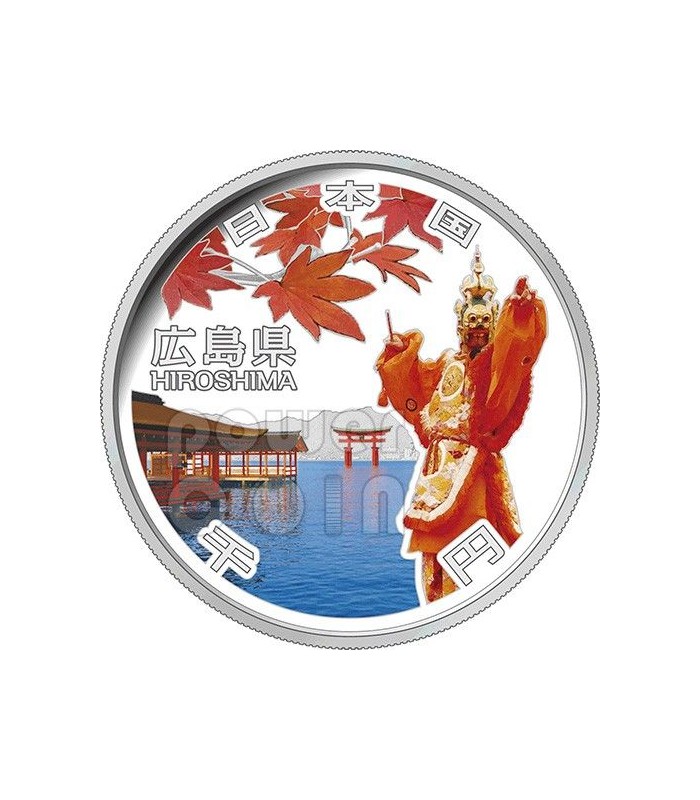Obverse design: Itsukushima Shinto Shrine, "Bugaku" and Red Maple Leaf Itsukushima Shinto Shrine: Itsukushima Shinto Shrine was founded in 593. The existing shrine pavilions were built by TAIRA no Kiyomori, a leader of samurai, in the 12th Century. The vermillion lacquered buildings and the great gate in the sea, contracting with the green on the mountain-side, create a unique landscape. In December 1996, it was designated as the World Cultural Heritage Site. Bugaku: Bugaku refers to the ancient music (Gagaku) and dance, which was transmitted from India to Japan, via China and Korean Peninsula. It is no longer inherited in China, Korea, or the birthplace India. Bugaku traditionally performed in the Itsukushima Shinto Shrine, is said to have been transmitted from Shitennoji Temple in Osaka by TAIRA no Kiyomori. Nowadays, it has been performed more than ten times a year. Red Maple Leaf: Maple trees are widely distributed throughout Hiroshima Prefecture, and there are a lot of beauty spots for red maple leaves in Hiroshima, including Sandankyo Gorge, Taishaku Gorge as well as Miyajima Island, which is known as one of the three most scenic spots in Japan. This is why the maple tree has been designated as a "Tree of the Hiroshima Prefecture" since 1966. Common reverse design of 1000 yen silver coin: Snow Crystals, Moon and Cherry Blossoms.
Read moreShow less



































































